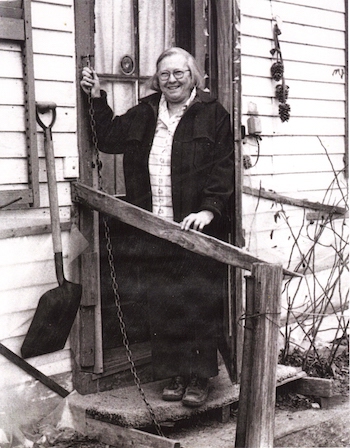Historians’ corner, April 2021: “Early Milkman”
By Heather Frost
After much deliberation,, I decided to share “Early Milkman”, by Vera E. Vaughn Rena Martindale Reed, for the similarities of past and present. I had also discovered a 1900’s Vernon Dog License of Vera Vaughn’s grandfather, Arthur Martindale, the milkman, among donated items for the museum. The April 1st 1900, Dog License registered a small, 1 ½ yr male, brown and white spaniel. In 2021, Vernon once again has a “Milkperson” the Miller Farm, selling bottled mik and other dairy products. Also in Vernon, Pine Ledge Farm offers locally raised meats and there are numerous road side stands selling local eggs, baked and canned goods, building community and some sustainability like past Vernon residents did.

Vera Vaughn lived in her grandparents’ (Arthur Martindale and Bertha Miller Martindale) farmhouse in South Vernon on Fort Bridgman Road, a stone’s throw from the present day corn stand (unfortunately the stand was not open last summer and was greatly missed). I remember there was an unused farm stand near Vera’s house almost in the same spot as the present day stand. It was identical to the unused farm stand going towards Brattleboro on Route 5, just past Tyler Hill Road. The house and stand were torn down. I do not remember the farm stands being open in my 50 plus years in Vernon but I am sure they were a valued within the community for local produce and goods at one time in history.
“Early Milkman” was published in the December 2006 Historians first Quarterly Newsletter to members.
Early Milkman
Grandpa Martindale peddled milk (today they call it delivering) in the Vernon – West Northfield area for nearly 40 years, until his death in 1935. He had a small herd of high grade Jersey stock. Mostly he farmed alone with help from his grandson, Victor Vaughn. At times, during haying, he might hire a man for a short time.
Up at 4 a.m., 7 days a week he went to the barn and did the morning milking. He did miking again at 4 p.m. After milking he strained the milk, putting it into 8, 10 or 12 quart cans, which were then submerged in a copper lined tank with water and huge 80 to 100 lb. cakes of ice. Some milk was put into quart “creamery cans” with glass on the side and a spigot to draw off the skim milk (for calves and pigs) and leaving the cream (for sale in half pint bottles, or made up into delicious ice cream). When the milk cooled, Grandpa would pour it into glass bottles and seal with cardboard caps.
Ready to peddle the milk? Hitch up the horse and wagon or sleigh, load up the milk and head out. The customer would return the empty bottles and put out tickets for the day’s needs. Before the days of bottles, he took the large cans and a metal quart measure with him and measured out the sale into the customers containers, Mag Finn had a beautiful white pitcher covered with a white towel, Cecil Wilson had his milk bottles sunk in a barrel of running spring water, tethered by a rawhide loop, others had pans or crocks.
The horse knew the route as well as the driver. Grandpa had a small driving horse that he used on the route. She would stop without command and start up when the milk had been left. The last time he peddled, he used a Ford truck. All this for 10 to12 cents a quart! He also sold eggs, ice cream, poultry and vegetables.
